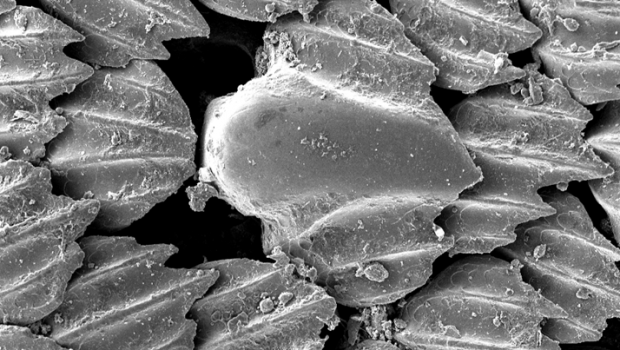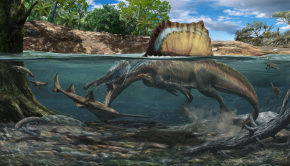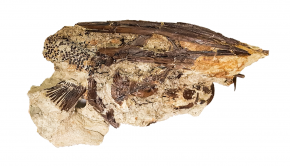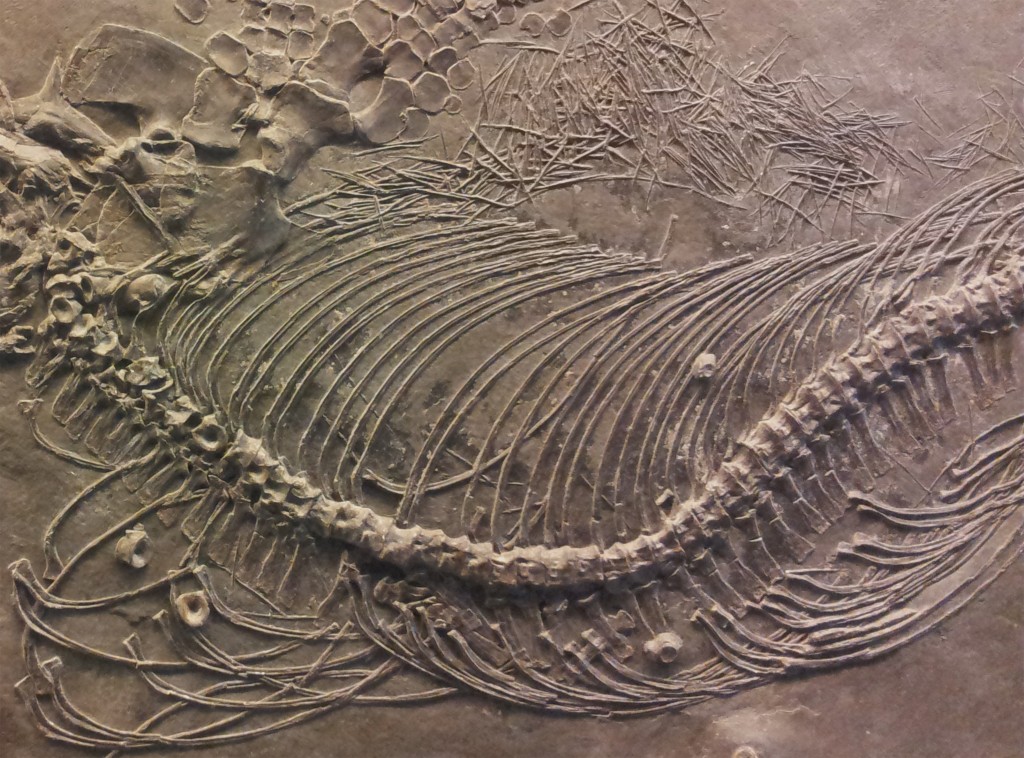Episode 76: Hydrodynamics
The shape of an animal is a reflection of the way it interacts with the physical world around it. By studying the mechanical laws which influence the evolution of modern animals, we can better understand the lives of their ancestors. Hydrodynamics examines the movement of water in contact with an organism, and can include everything from body shape to blood flow. In this episode we spoke to Dr Tom Fletcher, University of Leicester, about hydrodynamics in palaeontology, and his research looking at fossil fishes and modern sharks. Tom and others have published a paper on the hydrodynamics of fossil fishes, and he continues to work on the biomechanics of fossil animals.
Podcast: Download (45.4MB)
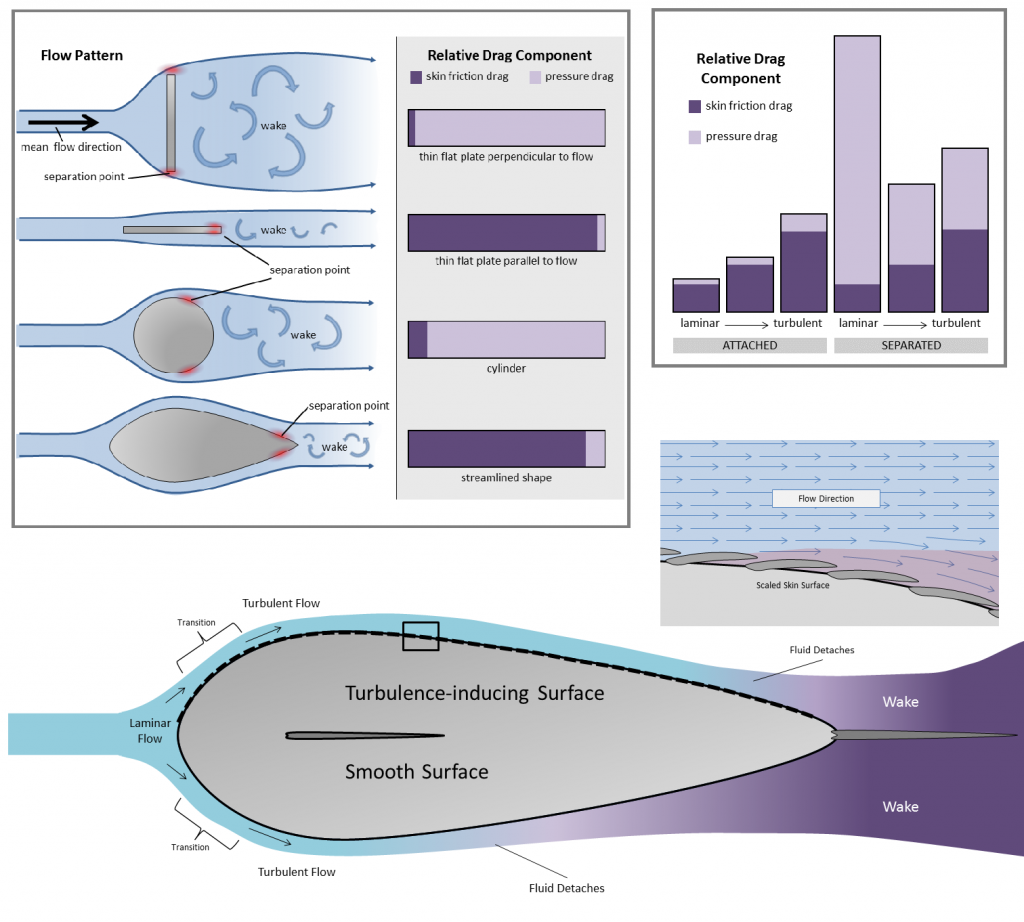
Drag is reduction in the velocity of fluid moving over an object, and can relate to both the roughness of the surface (skin friction) and body form (pressure drag). In the top left the flow patterns and proportions of drag types is shown for a number of different shapes (based on Talay, 1975). Many aquatic animals have a tear drop shape, as a compromise between minimal drag, and their internal anatomy. If the fluid is hugging the surface of an object it is said to be ‘attached’, but when the force of the fluid is great enough that it can skirt away and begin to swirl, it is said to be ‘separated’. The diagram in the top right shows how separated flow increases drag (redrawn from Webb, 1975), and aquatic animals use a number of adaptations to prevent this from happening. One of these could be the purposeful turbulisation of the fluid, making it more likely to hug the surface for longer, and reducing the area of the body exposed to separated flow (the wake). Image credit: Tom Fletcher.
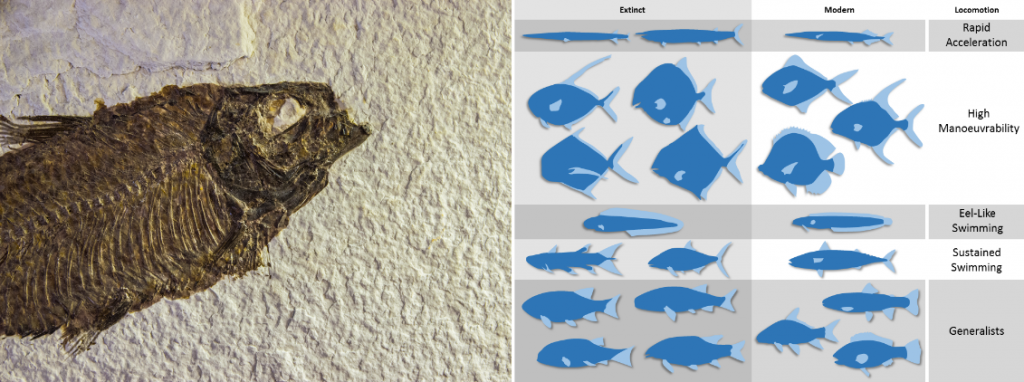
Fossil fishes such as this herring-like species (left) from the Eocene Green River Formation (Knightia sp.) can closely resemble modern relatives, and it is likely they lived and swam in a very similar way. However, even distantly and unrelated animals can resemble each other. Convergent evolution has resulted in similar solutions to similar biomechanical problems, as this comparison (right) of extinct and modern fishes demonstrates. Image credit: Tom Fletcher.

These modern sharks demonstrate how the scales of many fishes can differ across their bodies, presenting a problem for palaeontologists studying animals that have disarticulated during fossilisation. By studying the fluid mechanics of modern animals, similar adaptations can be recognised in the fossil record, and even provide technological inspiration. Image credit: Tom Fletcher.

The magnified skin of a modern requiem shark (Carcharhinus sorrah), showing scales fine-tuned to channel water towards a sensitive pit organ. Image credit: Tom Fletcher.

Juxtaposition of the modern mako shark with long-extinct Palaeozoic thelodonts and ‘acanthodians’. These very distantly related species are separated by over 300 million years, but have scales similarly capable of reducing drag. Image credit: James McKay.

